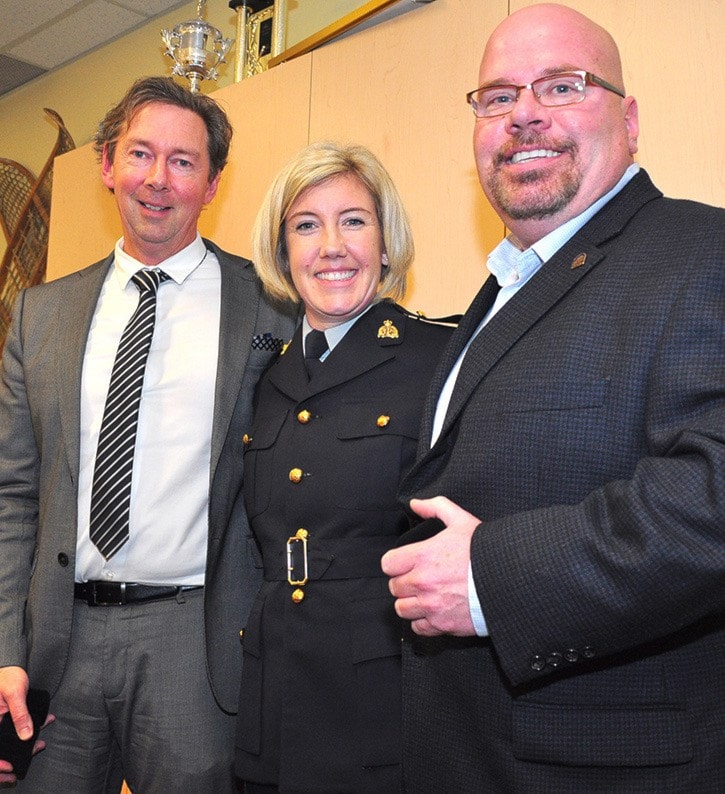Sooke RCMP’s auxiliary officers are returning to duty after a revised voluntary police program was announced in early January.
At least that’s the plan for the Sooke detachment’s auxiliary officers Maurice Connor, Alain Latreille and David Pedersen who fall under the RCMP’s new and stricter three-tier system.
Despite a one year hiatus from his position and some drastic changes, much like his auxiliary colleagues, Connor, is optimistic to begin working again with the RCMP.
“I continue to do my auxiliary work here, because I really enjoy being part of this community and this detachment,” said Connor, who’s been with Sooke RCMP since 2003 and runs a private home security company.
He hopes he will be able to assist like he did before, such as providing advice to break and enter victims on how to better protect their homes. With the new tier system, however, that may no longer be possible.
“I’m not sure if I can do that on my own anymore, because I have to be under direct supervision, which means an [RCMP] member would have to be with me,” he said, adding his issue with it is that it ties up a member. “They don’t have time to go do that, they have to worry about the break and enter itself, let alone the follow-up.”
Auxiliary duties were sharply restricted following a yearlong review of the fatal January 2015 shooting of RCMP Const. David Wynn at a casino outside Edmonton and the wounding of auxiliary Const. David Bond.
Sooke’s auxiliaries get Tier 2 status, meaning they are allowed do thing such as conducting foot and bicycle patrols, crowd and traffic control duties, training support and rescue operations assistance.
While Tier 2 auxiliaries will have peace officer status where provincial and territorial legislation permits, they won’t go on general duty patrols (ride-alongs) and will be under the direct supervision of a regular member of the RCMP.
Tier 3 auxiliaries will carry out the duties of Tier 1 and Tier 2 officers, plus the addition of general duty patrols and check stops.
Latreille, formerly a Canadian Navy officer who joined in 2005, was at first disheartened by the changes, but stuck to it and is ready to ease himself back into duty.
“I am aware of the risk that I take every time I put on the uniform and most of us are still willing to carry on and help out anyway we can, understanding that the RCMP have a duty to keep us safe,” he said.
All three Sooke auxiliaries were also recently given long service pins for every five years of service. Connor received three, Latreille two, and Pedersen one.
Among the changes are altered auxiliary police uniforms, mainly to underline their volunteer status and differentiate them from regular RCMP members.
Some things remain unchanged, such as the mandatory 160 hours auxiliaries need to maintain their status in the program.
“These changes have been made based on evidence and extensive, thoughtful consultation,” said RCMP Deputy Comm. Kevin Brosseau, Contract and Aboriginal Policing.
The force said new mandatory national training standards will be developed for all three tiers in the coming months. Among the requirements, applicants must be at least 19 years old and a Canadian citizen with at least a high school diploma.
